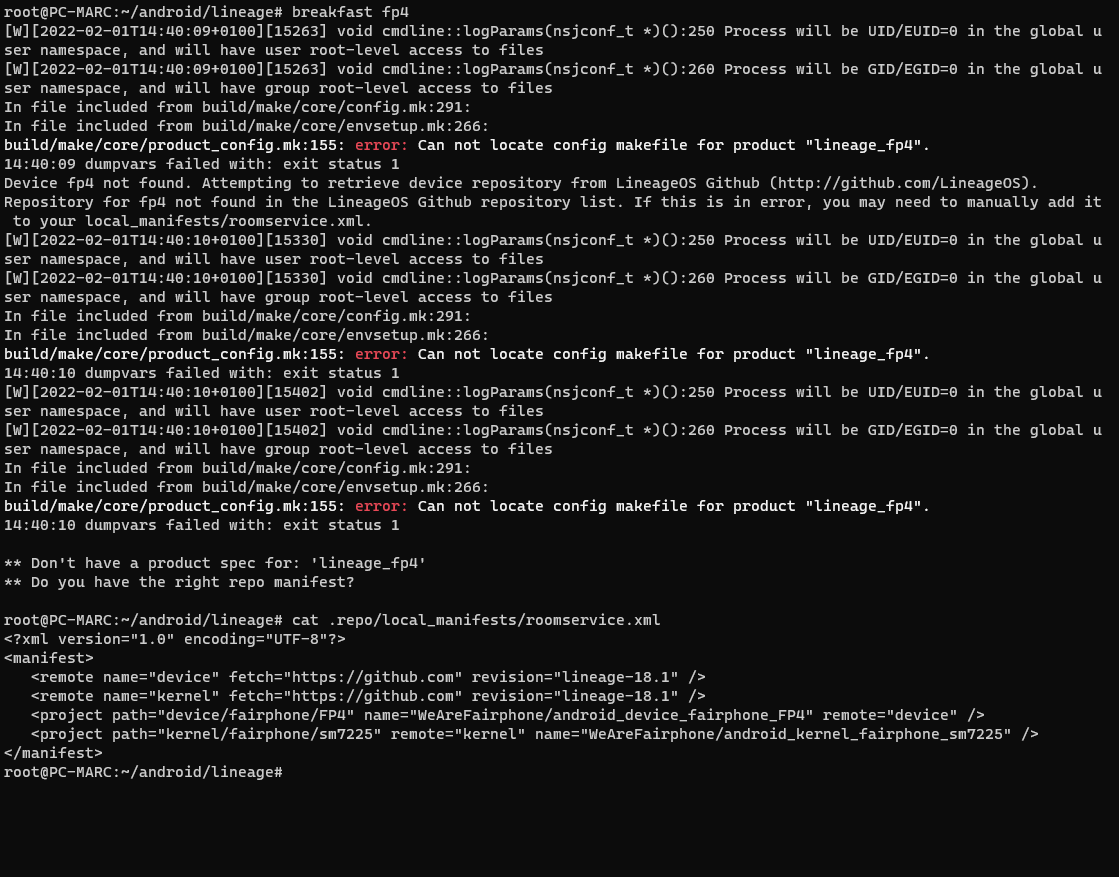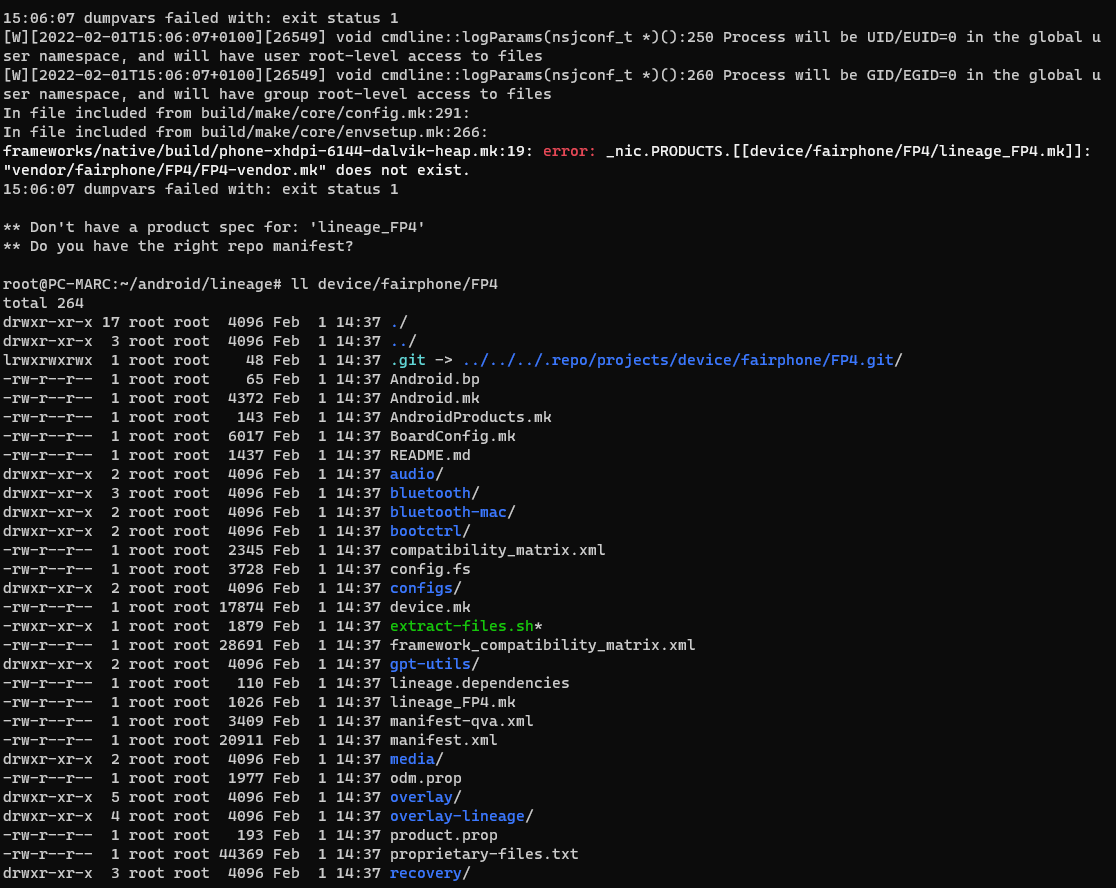It worked  To recap: I extracted the proprietary files from my phone. The missing files were added from the iodé build. The
To recap: I extracted the proprietary files from my phone. The missing files were added from the iodé build. The roomservice.xml file looks like this:
<?xml version="1.0" encoding="UTF-8"?>
<manifest>
<remote name="device" fetch="https://github.com" revision="lineage-18.1" />
<remote name="kernel" fetch="https://github.com" revision="lineage-18.1" />
<project path="device/fairphone/FP4" name="WeAreFairphone/android_device_fairphone_FP4" remote="device" />
<project path="kernel/fairphone/sm7225" remote="kernel" name="WeAreFairphone/android_kernel_fairphone_sm7225" />
</manifest>
Other than a few warnings, the build finished successfully. Nevertheless, I’m still hesitant to actually install it on my phone since I haven’t seen a clear path to restoring the device to its initial conditions should something go wrong.
I assume Fairphone would have to release a complete stock image for that to be easily possible.





